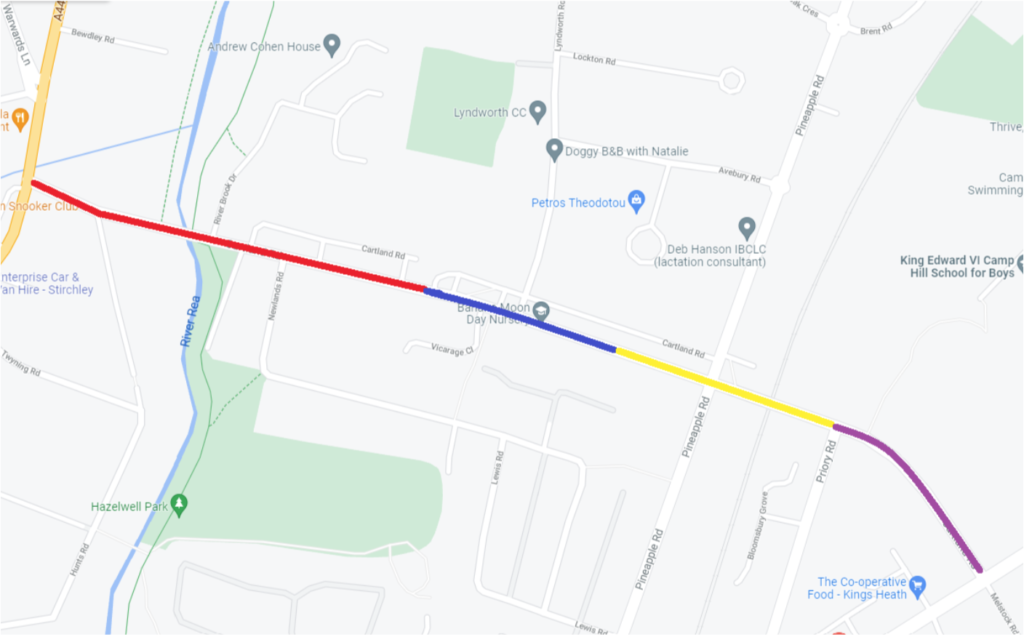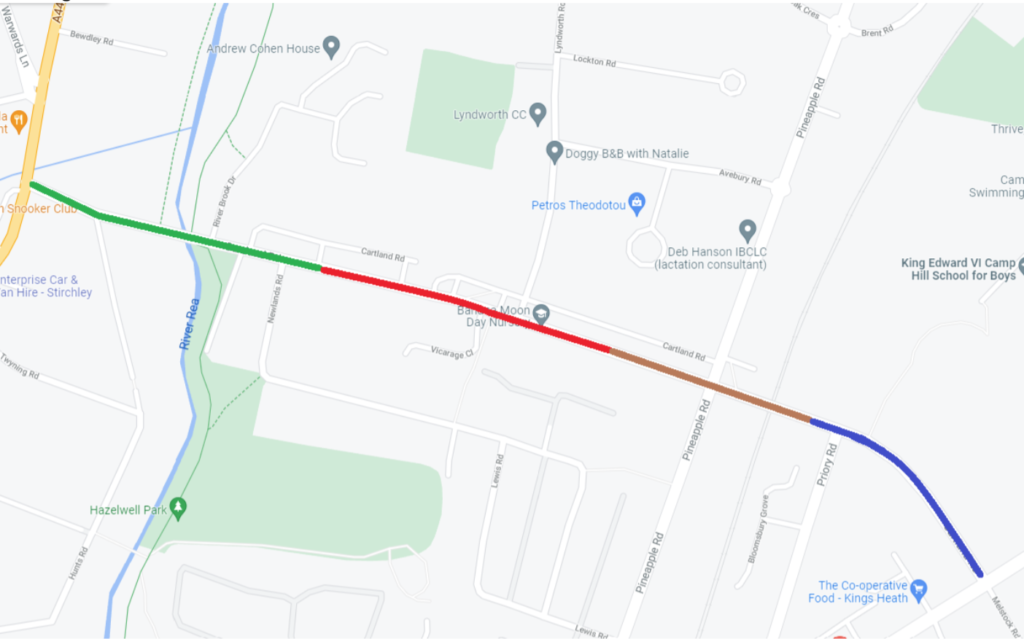(This was received from the contractors, via the council)
Whilst there will be a Road Closure on the whole road, we will make every effort to allow residents and visitors including carers, deliveries etc to access addresses when possible and safe. Please speak to Traffic Management staff at the road closure points as they may ask you to wait or send you round another way. On some nights the below areas and junctions will be out of action for the reasons given in bold. We suggest you park elsewhere if possible, or leave/return before 7pm.
More information can be obtained by speaking to a site Supervisor who is identified by the wearing of a Black Safety Hat. Please use the below maps to work out if you can come & go, and if you need to turn Left or Right out of your address or Cul-de-Sac. Please do not park on the road in Cartland Road during the night. The service road is not being resurfaced, so you can park there. The road will be open as normal during the daytime. This work will continue at weekends – this is to reduce the length of time on this road.
Plane and Binder Course: 8 Nights
Nights 1 & 2 Thu 10th & Fri 11th = Red
Nights 3 & 4 Sat 12th & Sun 13th = Blue
Nights 5 & 6 Mon 14th & Tue 15th = Yellow
Nights 7 & 8 Wed 16th & Thu 17th = Purple

Civils: 9 Nights, Fri 18th to Sat 26th .
Surface Course & Lining: 4 Nights
Sun night 27th = Green
Mon night 28th = Red
Tue night 1st March = Brown
Wed night 2nd March = Blue

Anti-skid: 2 Nights – Thu 3 rd & Fri 4th Mar
Weekend: no work
Loops: 2 Nights Mon 7th & Tue 8th Mar
Descriptions of phases of road construction
- ‘Plane’ is the term used for grinding up the old road surface and dumping it into a truck via an elevated conveyor belt. This process is noisy, dusty and smelly, it is also when access to properties will likely be disrupted or delayed.
- ‘Binder Course’ is laying hot tarmac, which is then rolled flat, this then needs to cool before being driven on, usually an hour or so. This is always completed immediately after the road has been planed and in the same working day/night in order to provide a temporary road surface to drive on, often with raised ironworks that signs warn of. This process will also cause delays accessing properties and can be noisy and smelly.
- ‘Civils’ is the Civil Engineering of resetting or replacing ironworks such as rain gullies and manhole covers, kerbstone repairs and replacements. This process involves noise from diggers but causes less disruption to accessing properties.
- ‘Surface Course’ is laying the top surface of hot tarmac which is then rolled flat and must cool before being driven on, usually 2-hours or so depending on the air temperature and weather conditions. The process looks the same as Binder Course. Some noise and smells occur and access to properties will be delayed.
- ‘Lining’ this is when the white and yellow lines are painted back in, such as centre lines, junction markings, double yellow lines, disabled bays & H bars, pedestrian crossings etc. This is a silent process and the paint dries instantly. Access to properties is usually not affected.
- ‘Anti-skid’ or ‘HFS’ is a High Friction Surface material applied over the Surface Course to prevent skidding in areas approaching junctions and pedestrian crossings. It is coloured red or buff depending on where it is used. This will involve a noisy heat treatment of the road surface prior to application and will cause disruption in these areas.
- ‘Loops’ are the detection pads that control traffic-lights, and these are cut into the finished Surface Course using a disc cutter which is noisy. This will cause some disruption close to light-controlled junctions and crossings.
